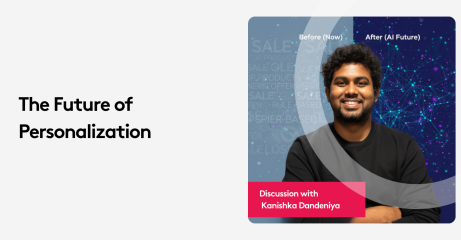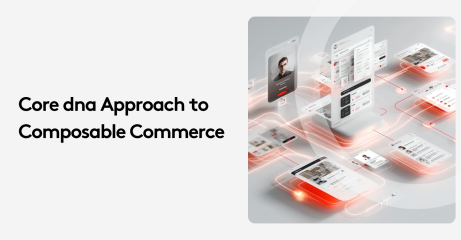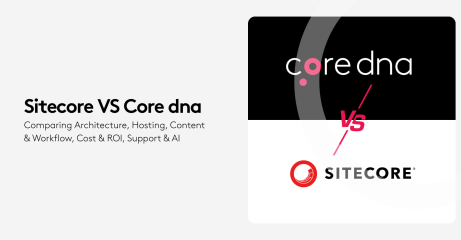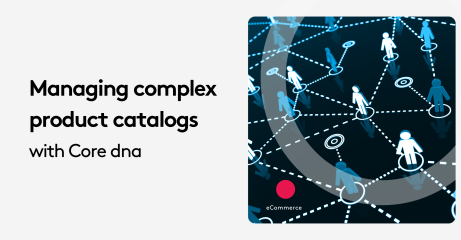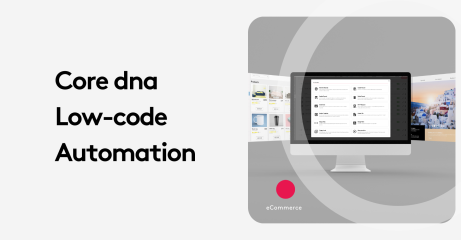eCommerce Personalization: Why Demographic-Based Personalization is on Its Way Out (And What to Do Instead)
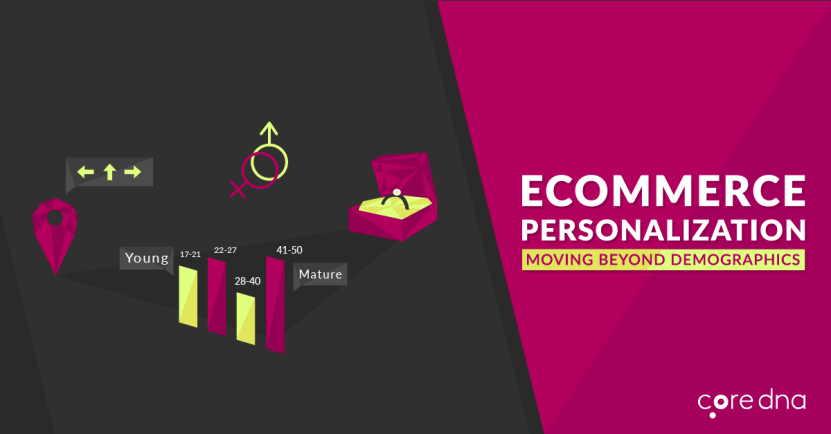
The concept of traditional content personalization is simple:
A brand collects customer data (like age, location, and past product purchases), and uses it to segment its audience into groups, clustering similar customers together in the process. Each segment is called a persona, which the brand can humanize and then create tailored content for. The brand’s Digital Experience Platform (DXP) then delivers tailored messaging and products exclusively to each persona — personalizing the customer journey for each persona-member in the process. Kind of.
While this demographic-based approach to personalization is useful, the world of eCommerce personalization has evolved — and it’s time your brand evolved along with it.
In this article, we examine why demographic personalization is on its way out, and why motivation-based personalization is the way forward.
On this page:
Why offering a personalized experience crucial
Okay, so it might seem rather silly to explain why providing a personalized digital experience to your customers is important.
I mean, who wouldn’t want to feel as if the brands they engage with have created a customer experience specifically meant for them?
Still, it’s worth laying out the main reasons that personalization is all but essential in the world of eCommerce today.
[Personalization benefit #1] The modern consumer appreciates - and expects - personalization
Perhaps the strongest argument for providing a personalized experience to your eCommerce customers is - as we just said - your customers simply appreciate it.
What’s more, most modern consumers expect some level of personalization when engaging with their favorite brands online.
That said, when a company fails to meet these expectations, most consumers are left feeling disappointed. Case in point, a survey by Janrain found that 74% of customers get frustrated when presented with any type of content that hasn’t been tailored to their needs or interests.
When these expectations are met, however, great things can happen. According to data collected by Salesforce:
- Consumers are 210% more likely to classify personalized content as “important” (as opposed to having no opinion)
- Nearly 60% of consumers say that tailored engagements based on their history with a company plays a very important role in their purchasing decisions
- 84% of consumers say that being treated as an individual, rather than just “another customer,” is the key for a brand to make a sale
Again, this is all pretty self-explanatory:
Providing a personalized experience to each of your customers simply makes their experiences with your brand more enjoyable. The more joy they get out of these engagements, the more business they’re likely to do with your company.
[Personalization benefit #2] The nature of eCommerce means catering to a diverse audience
To be sure, the “average customer” has never really existed.
Yes, in the past - when an organization’s reach was much smaller due to technological restrictions and whatnot - a good majority of said company’s target audience likely shared a great deal of qualities and characteristics. That said, there was a time when smaller companies could typically operate by catering to the needs of their “most common” customer.
Nowadays, for companies operating in the realm of eCommerce (and most companies, in general), this approach simply won’t do. That is to say that eCommerce companies, by nature, have the ability to reach a wide audience - and should be prepared to cater to the diverse needs of these individuals.
Think about it:
Once a company has brought its website online, it essentially can be viewed by billions of people throughout the world. In other words, an organization’s eCommerce site could be viewed by people from various geographical locations, cultural and ethnic backgrounds, and overall walks of life.
While most companies will, of course, have a clearly defined target audience (that may include multiple customer segments), they should also leave the door open for consumers who lie on the outskirts of this target to experience their brand, as well.
Which brings us to our next point:

[Personalization benefit #3] Focusing on personalization is conducive to scaling
Going along with everything we just said, if a company is always focused on providing a personalized experience to its customers - no matter who they are - it will have little to no problem expanding its reach to other audience groups as it becomes more and more successful.
On the other hand, if an organization operates with a more “one-size-fits-all” approach to customer engagement (in which it caters to the “average customer” within each of its target segments), expanding its reach to a completely new target audience will prove to be rather difficult. That is, instead of being able to simply tweak certain aspects of the customer experience to the new target’s liking, the company will likely need to go “back to the drawing board” and figure out how to cater to this new audience from scratch.
It all comes down to flexibility and adaptability: if your eCommerce company is focused on creating a personalized experience for each of your customers from the get-go, it won’t matter what persona they fit into or anything like that. All that will matter is that they’re a person looking to receive value from your company - and you need to be prepared to give them what they’re looking for.
Before we move on, it’s important to note that, as explained in this article from SmartInsights, “personalization” doesn’t necessarily mean focusing on a “segment of one.”
It’s not about developing unique content on-demand for each of your individual customers. And it’s not about putting a manual, personal touch on every engagement between you and your individual customers.
Rather, personalization is about delivering the right content and offers to the right individuals - at the right time. And, as we’ll discuss in a bit, it’s about automating some processes while also knowing when to step in and engage with your customers in a person-to-person, authentic manner.
Avoiding the “creepiness” factor
Before we start discussing some of the ways you can provide a personalized experience to your customers via your eCommerce site, we need to discuss how not to do it.
According to data collected for InMoment’s 2018 CX Trends report, an astounding 75% of consumers say that personalization efforts from brands often come off as rather creepy. To add to this, nearly 50% of consumers say that they would stop doing business with a given brand if its personalization efforts hit this “creepy” threshold.
But, as we went over earlier, some personalization - in fact, a decent amount of it - can truly enhance your customer’s experience with your brand.
So, the question is:
Where, exactly, does this “creepy threshold” lie?
Well...let’s start with an example that goes way over the line.
You may be familiar with the infamous Target scandal from several years ago, in which the retailer’s marketing team used various algorithms based on a young customer’s recent engagement and purchase history to predict that she was, in fact, pregnant. In turn, the company began sending coupons for baby-related products, such as diapers, cribs, and the like.
We don’t need to go into too much more detail to illustrate how big an invasion of privacy this was, do we?
The point, here, is that determining where personalization goes from “convenient” to “creepy” is often a matter of human decency. When privacy and sensitivity are an issue, it’s definitely best to err on the side of caution.
Speaking of privacy, the customer’s consent also comes into play here, as well; this is especially true now that the GDPR is in full effect. Basically, you need to be absolutely certain that your customers have given you full consent to collect and use their information for the purposes of personalizing their experience with your brand.
Simply put: if you haven’t gained their permission, you should absolutely not use their information under any circumstances whatsoever.
So, how well do you know your customers?
This should be a relatively easy question to answer right? After all, they’re the ones buying your products to keep your digital roof (or if you’re really old school, your physical roof) over your head.
And yet, most brands have little to no knowledge of their customers. Sure, you might have some data on their ages, locations, and product preferences, but more often than not, that data says very little about who your customers actually are, and what they want.
To truly succeed in the age of personalization, you not only need to know who your customers are, you need to break away from hypothetical personas based on flimsy data. Instead, you need to understand why they’re buying from you, and what their reasons for buying the things they buy. To do that, you need to tap into the emotional needs behind your customer's decisions — and demographical data can’t help you there.
The problem with demographic-based personalization
Demographic-based marketing was the eCommerce world’s logical first step into the world of personalization. But now that most brands are a few paces in, it’s time to analyze exactly what demographic-based personalization gives you — and what it doesn’t.
Let’s start with the basics. Traditionally, brands would build a range of personas to segment their audience based on demographic data such as:
- Age
- Gender
- Income
- Location
So for example, one persona may look something like this:
- Name: Mandy
- Age: 21-29
- Income: $25,000-$45,000
- Location: United States
And sure, it makes a lot of sense to send different emails and show different products to middle-aged women as opposed to millennial men, because those two persona types will naturally have innate consumer differences and preferences.
However, when it comes to eCommerce personalization in particular, relying on demographical data alone to personalize content is like seeing your customers through frosted glass — you get the picture, but the details are missing.
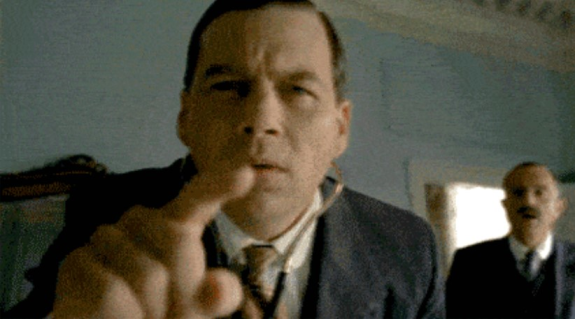
It’s similar to saying every US citizen loves Baseball (well, Baseball is the national sport, right?), and so you should, therefore, present all US citizens with plenty of baseball-related merchandise. When you think of it that way, there’s nothing very personal about demographic-based personalization at all.
A better eCommerce personalization: Psychographic profiling
For a deeper insight into who customers are, and what they want, eCommerce brands need to start supplementing their personalization strategies with data based on consumer motivations, rather than just their demographics.
After all, the reason why people are visiting your site is far more important than their gender or location. Perhaps that’s why Gartner predicts that by 2020, brands who are able to offer intent-based personalization will increase their profits by up to 15%, compared to brands who don’t.
Furthermore, demographic-based personas lead you down a never-ending path where marketers have to keep creating new personas every time a new type of consumer gets wind of your brand. And of course, with every new persona, you need to create a new set of “personalized” content for that persona, and that persona alone.
Psychographic profiling on the other hand, which produces motivation-based personas, intelligently limit your number of personas.
When less is more
With motivation-based personalization, you need fewer personas and thus fewer versions of your content. Yet, the end result is a more personalized experience.
Here’s how that works:
Multiple demographic-based personas often share similar motivations. Thus, if you switch your focus from demographics to motivations, you’ll be able to cover larger segments of your audience, but with fewer personas — and better still, your content will be more aligned with your consumer’s needs.
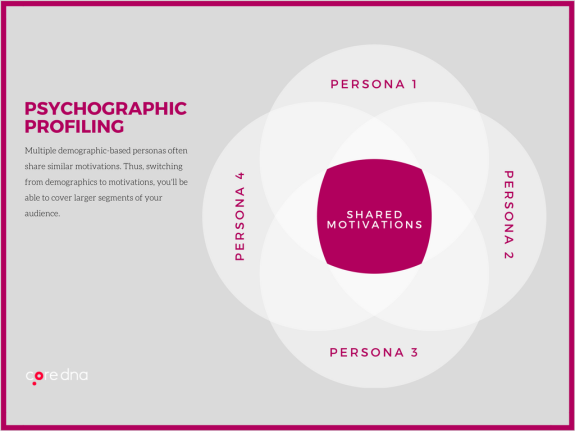
Let’s take a look at another example. With traditional personas, a book retailer may have two separate personas called Greg, a freelance photographer, and John, a bus driver:
Persona: Greg
- Greg, freelance photographer
- Age 31-45
- Total household income $50-70k
- Lives in a city
- Enjoys watching Netflix dramas
- Shops for books on Amazon
Persona: John
- John, bus driver
- Age 25-31
- Total household income $50-70k
- Lives in the suburbs
- Gets his news via Twitter
- Prefers to shop online and download audiobooks
As you can see, those two personas are only segmented based on age and location. But once you switch to motivation-based personas, you can suddenly combine both Greg and John into one persona that caters for them both:
Persona: Budget-convenience-techie
- Budget-conscious
- Make purchases based on convenience
- Tech-savvy
Sure, demographics come into play (so you might want to create sub-personas to narrow down locations and ages), but the key here is that you’re addressing their motivations first. The end result is a motivation-driven persona that speaks to the consumer’s true wants and needs.
Suddenly, you don’t just know who your target market is in a vacuum. You know who they are in context.
Digging deeper: 3 ways to engage in behavioral targeting
To go even deeper, you can glean data from your digital experience platform to give your motivation-based personas yet more context by analyzing behavior to deduct each consumer’s intent as they move through your website. This process is called behavioral targeting.
Blending behavioral targeting and psychographic profiling is the cutting edge of eCommerce personalization. Below we look at a few different ways we can break down customer consumer behavior, all of which can be paired with motivation-based personas to deliver uber-personalized customer experiences:
[Personalization tip #1] Behavioral intent
Behavioral intent deals with a customer’s past actions, like their browsing history and purchase history on your website. Recommendations are then made based upon what your visitors have done in the past. For example, here’s what I got when I’ve been browsing for some short-sleeved shirts on ASOS (yes, I’ve been on a shopping spree).

[Personalization tip #2] Stated intent
Stated intent deals with real-time visits to your site, where a customer’s actions determine the products, and messages on display. Here’s an example from the king of personalization, Netflix.
Nextflix recommended a related TV series - sneakily, it's their original TV series - based on the movie that I just finished. Looks like they REALLY want me to binge watch.
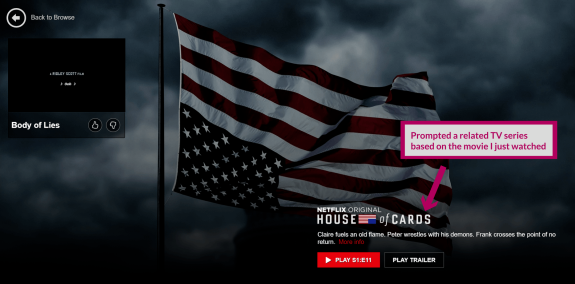
[Personalization tip #3] Search intent
Search intent, as the name implies, takes keywords from a visitor’s search history to determine what they’re looking for. Here’s how noon, a UAE-based eCommerce site, does it.

So, are demographics dead?
Demographic-based personas aren’t dead, they’re just primitive.
If you’re brand new to eCommerce personalization, demographic-based personalization should be your first step. However, to unlock the true power of personalization we need to combine consumer attributes with their motivations, as well as their intent. Only then can you get truly personal.
So while showing your female customers high-heels and your male customers work boots might lead to a slight increase in conversions, you’ll need to build far more context around your customers if you ever hope to deliver the type of personalized experiences that can attract the 77 percent of consumers who have chosen, recommended, or paid more for a brand that provides a personalized service or experience.
How else do you think eCommerce personalization is changing? Share your thoughts in the comments below.





